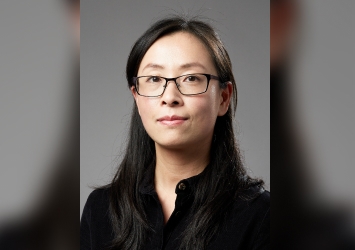February 2023 – Monthly portrait of a young researcher

Tong Tong MD, PhD
Tong tong is an electrophysiologist in neuroscience (Ph.D. from the Universitätsklinikum of Saarland, Germany, and M.Sc. from Universität Regensburg). She has been also trained as a clinic doctor with the specialty in neurology (MD from Soochow University, China). Her research interest includes using electrophysiological techniques, pharmacological and optogenetic methods to understand the communications between neurons and cancer cells, which, she believes, will benefit the development of novel anti-cancer therapeutic strategies.
Tong Tong is currently a post-doctoral researcher in Assoc. Prof. Anders Rosendal Korshøj´s group at the Department of Clinical Medicine – Department of Neurosurgery, Aarhus University Hospital. She is working on identifying the existence and mechanism of the synaptic communication between neurons and glioma in humans (WP9).
Recent studies have identified the neuron-to-brain-tumour synaptic communications (NBTSC) in the glioma xenograft mouse models. In animal models, the gliomas hijacked the basic mechanisms of neurotransmission, including glutamatergic AMPAR and NMDAR signaling, to promote their proliferation.
However, a crucial question remains if the same mechanism can be validated in human cancer patients. Tong Tong’s research project aims to answer this question by studying the NBTSC in human gliomas, which may provide insights into synaptic inputs and glioma biology. She will use patient-derived tissue and focus on the areas of the brain infiltrated by gliomas.
The specimens will be sliced and cultured for viral transfection to enable fluorescent markers and channelrhodopsin expression on the specific cells. This allows for identifying human cortical cell types prior to electrophysiological recordings after the transfection of cells with rapid acting viruses. Combining the electrophysiological, pharmacological, and optogenetic approaches, she will determine the bidirectional communication between the neurons and glioma, to elucidate the detailed mechanisms of the NBTSC.
Additionally, she will use calcium imaging to examine the effects of synaptic input on the downstream pathways in glioma cells.
In all, Tong Tong’s research, validating the synaptic communication between neurons and the tumor cells in humans, will fill the important gap from the mouse model to humans, which constitutes a crucial step towards the novel anti-cancer therapeutic strategies for human patients.
Research focus:
- Neuron-to brain tumour synaptic communication (NBTSC)
- Human organotypic brain slice culture
- Adeno-asscociated virus mediated genetic labeling
- Optogenetics & Electrophysiological techniques
WP relation:
WP9- Synaptic input to brain tumors in humans – potential implications for tumor growth, epilepsy and cancer treatment
Supervisor:
Assoc. Prof. Anders Rosendal Korshøj
Department of Clinical Medicine – Department of Neurosurgery
Aarhus University Hospital
